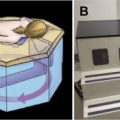Ductal adenocarcinoma accounts for 85% to 90% of all solid pancreatic neoplasms, is increasing in incidence, and is the fourth leading cause of cancer-related deaths. There are currently no screening tests available for the detection of ductal adenocarcinoma. The only chance for cure in pancreatic adenocarcinoma is surgery. Imaging has a crucial role in the identification of the primary tumor, vascular variants, identification of metastases, disease response assessment to treatment, and prediction of respectability. Pancreatic neuroendocrine neoplasms can have a distinctive appearance and pattern of spread, which should be recognized on imaging for appropriate management of these patients.
Key points
- •
Adenocarcinoma of the pancreas has a high mortality rate. Imaging plays a critical role in determining patients who are surgically resectable.
- •
Pancreatic neuroendocrine neoplasms encompass diverse clinical entities. These neoplasms show distinctive patterns of spread, which is important to recognize on imaging.
- •
Pancreatic cysts are increasingly detected because of the increased utility of imaging. Recent updates to management need to be incorporated into the management of these patients.
- •
Imaging plays a central role in diagnosing and characterizing pancreatic neoplasms. Preoperative high-quality imaging is essential in planning surgery.
Stay updated, free articles. Join our Telegram channel

Full access? Get Clinical Tree






